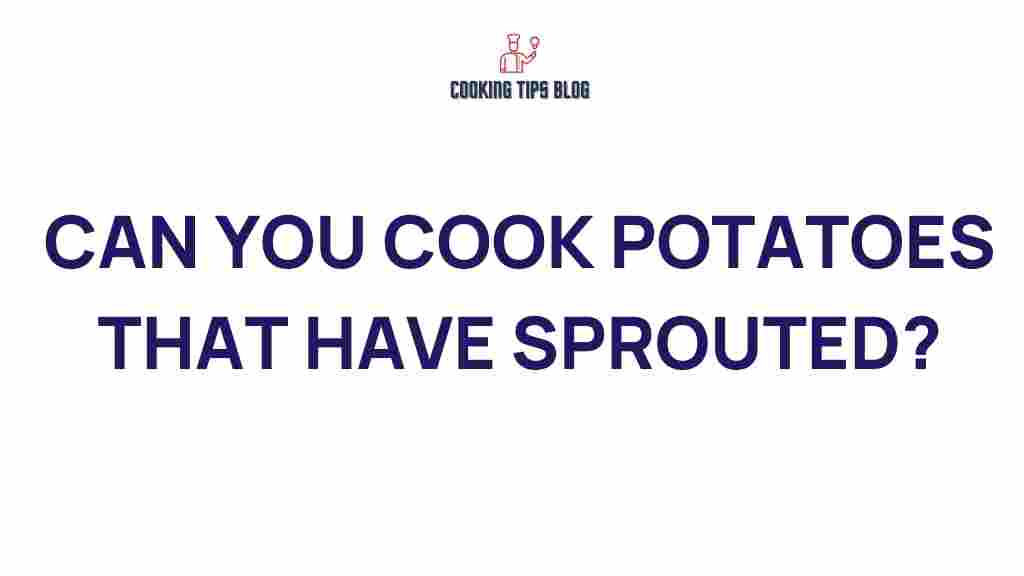The Surprising Truth: Can You Cook Potatoes That Have Sprouted?
When you open your pantry or fridge, you might occasionally find a bag of potatoes that have sprouted. At first glance, they may look unappetizing, leading many to wonder if these sprouted potatoes are safe to cook and eat. In this article, we’ll delve deep into the world of sprouted potatoes, addressing common concerns, providing a step-by-step guide on how to prepare them, sharing troubleshooting tips, and concluding with important safety information.
What Are Sprouted Potatoes?
Sprouted potatoes are simply potatoes that have begun to grow shoots, often referred to as “eyes.” This process typically occurs when potatoes are stored for extended periods, especially in warm and moist environments. While many people may discard these potatoes out of fear, others are curious about their edibility.
Are Sprouted Potatoes Safe to Eat?
The short answer is yes, sprouted potatoes can be safe to eat, but there are some important considerations:
- Green Color: If the potato has turned green, this indicates the presence of solanine, a toxic compound that can cause nausea and gastrointestinal issues.
- Size of Sprouts: Small sprouts can typically be trimmed off, but if the potato is heavily sprouted, it’s best to discard it.
- Texture: If the potato is shriveled or has a wrinkled skin, it may be past its prime, making it less enjoyable to eat.
Step-by-Step Process: Cooking Sprouted Potatoes
If you’ve determined that your sprouted potatoes are safe to eat, follow these simple steps to prepare them:
Step 1: Inspect the Potatoes
Before you start cooking, closely examine each potato:
- Look for any green patches and cut them away.
- Check for softness or significant blemishes; if present, those parts should also be removed or discarded.
- Trim off any sprouts using a sharp knife.
Step 2: Wash the Potatoes
Using cool water, wash the potatoes thoroughly to remove any dirt or debris. A vegetable brush can help you scrub the skin effectively.
Step 3: Choose Your Cooking Method
You can cook sprouted potatoes using various methods, such as:
- Boiling: Cut the potatoes into even-sized pieces and boil them in salted water until tender.
- Baking: Wrap the potatoes in foil or place them directly on the oven rack at 400°F (200°C) for about an hour.
- Mashing: Boil the potatoes and then mash them with butter and seasoning for a delicious side dish.
Step 4: Season and Serve
Once cooked, season your potatoes with salt, pepper, butter, olive oil, or herbs to enhance the flavor. Enjoy them as a side dish, in salads, or as a main ingredient in various recipes.
Troubleshooting Tips for Cooking Sprouted Potatoes
Even with careful preparation, you may encounter issues while cooking sprouted potatoes. Here are some troubleshooting tips:
- Bitterness: If your cooked potatoes taste bitter, it may indicate excessive solanine. Discard them immediately.
- Texture Issues: If the potatoes are mushy after cooking, they may have been too old or improperly stored. Always choose firm potatoes.
- Unpleasant Odor: If your potatoes emit a foul smell after cooking, it’s best to discard them.
Common Questions About Sprouted Potatoes
Can I plant sprouted potatoes?
Yes! If you have sprouted potatoes that are still firm, you can plant them in your garden. They can produce new potatoes, making them a sustainable option for gardeners.
How to store potatoes to prevent sprouting?
To avoid sprouting in the future, store potatoes in a cool, dark, and well-ventilated place. Avoid storing them in plastic bags, as moisture can lead to sprouting.
Are there any health benefits to eating sprouted potatoes?
While sprouted potatoes contain more nutrients than their non-sprouted counterparts, the potential risks associated with solanine should be taken seriously. Always ensure that any sprouted potatoes are safe to eat before consumption.
Conclusion
In summary, sprouted potatoes can be safe and delicious when prepared correctly. By inspecting, washing, and cooking them properly, you can minimize risks and enjoy this versatile vegetable. Always remember to prioritize safety by discarding any potatoes that show signs of excessive sprouting or greening. For more information on potato recipes, check out this comprehensive guide. And if you want to learn more about the nutritional benefits of potatoes, visit this resource.
Next time you find sprouted potatoes in your kitchen, don’t toss them out right away. With the right knowledge and preparation, you can turn them into a tasty dish that minimizes waste and maximizes flavor!
This article is in the category Recipes and created by Cookingtipsblog Team
